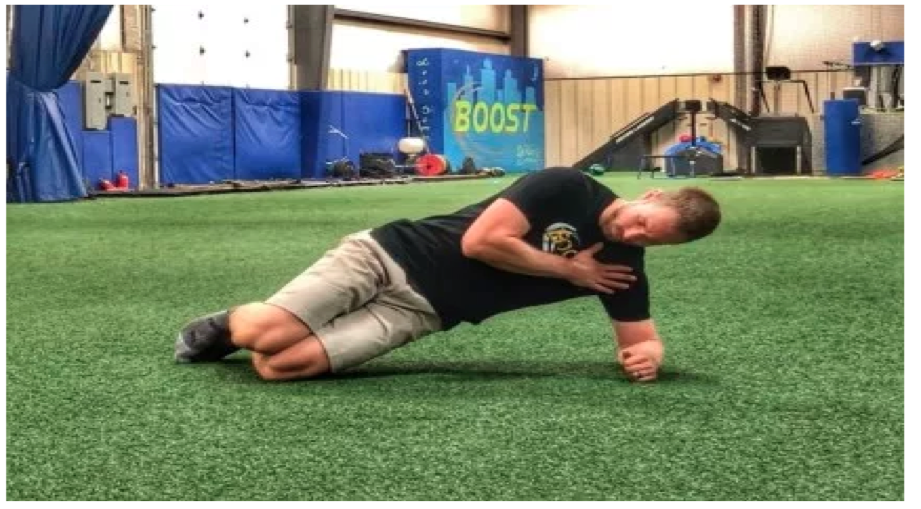 rest is never the fix...When was the last time you went to an allied health practitioner and were told to ‘rest’? Eliminating what triggers your pain for a few weeks will likely decrease your symptoms, it is never a final solution. Chances are the pain will eventually return because you never addressed why the problem started in the first place. Eliminating the movement, posture or load that causes your pain is only half of the battle in alleviating pain in an injury. Anyone can tell you to stop doing something that hurts. Eliminating symptoms and building your body to become more resilient to future injury requires a different and more active approach. Let’s kick-start an active approach, by learning about our body’s ‘core’ and how it’s function relates to both the cause and fix of injury. What is Core-stability? The biggest misperception is that your core comprises of your rectus abdominis (6-pack) and this alone. It is composed of the abdominal muscles on your front and sides, the erector muscles of the back and even the larger muscles that span multiple joints (like the lats and psoas- hip flexor muscles). It may surprise you that the glutes are also an important part of the ‘core’. Each and every one of these muscles must work together in order to enhance the stability of the spine. It is the stiffness part that is important for stability. Think of the spine as a flexible rod that needs to be stiffened to bear load. This is the role of the muscles. When the core fails to meet the stability demands placed on the body during a certain lift, parts of the spine will be overloaded with forces that increase injury risk and performance will suffer. Stuart Mcgill’s research has shown that isometric exercises to enhance muscular endurance are far superior when compared to dynamic strengthening exercises in enhancing spinal stiffness and stability (making them ideal not only for rehabilitation of back injuries but also in the training and enhancement of athletic performance). Dynamic strengthening e.g. the conventional crunch in times of back pain can be of detriment due to repetitive flexion which loads structures like your discs suboptimally, causing pain in cases. Why you need to be an active participant in your recovery. Another misperception people have is that allied health practitioners can fix everything solely through manual therapy consultations. In reality both the practitioner and patient play an equal role on the road to recovery. I.e. an exercise regime contributes drastically to your recovery and maintenance not just the treatment itself. Not being an active participant can lead to delayed recovery and longer prognosis periods. The benefits of taking control of your own health include reduced pain levels, faster recovery times which is also linked to improved psychological health. The Mcgill 3 For those in lower back pain, these 3 isometric exercises can help stabilize your spine through strengthening the core as mentioned above. Modified curl up Step 1: Lie on your back with one knee bent and the other straight. If you currently have pain that radiates down one leg, flatten that leg out against the ground. Place your hands under your low back (this will ensure your spine remains in a neutral slightly arched position during the next step). Step 2: Pick your head off the ground only a few inches and hold that position for 10 seconds. If you’re resting your head on a pillow, imagine it as a scale and lift your head off of it only enough to make it read “zero” on the dial or screen.2 The goal is to perform this curl-up without any movement in the low back! If you raise your head and shoulders too high (like a traditional curl-up or crunch) your low back will round and excessive forces will be transferred to the spine that could increase your symptoms. Step 3: After a 10 second hold, relax your head back down to the resting position. side plank The side plank is a unique exercise as it activates the lateral oblique and QL muscles on only one side of the body, making it an excellent choice for addressing weak links in stability while placing minimal forces on the spine. Step 1:Lie on your side with your legs bent and upper body supported through your elbow. Place your free hand on your opposite shoulder. Step 2: Raise your hips so that only your knee and arm support your bodyweight. Step 3: Hold this position for 10 seconds before returning back down. Perform the same descending pyramid rep-scheme for each side. bird dogStep 1:Assume an ‘All 4’s’ position (quadruped) with your back in a neutral alignment. Remember a ‘neutral’ position is a very slight arch and not completely flat. Step 2:Without allowing any movement to occur at the low back, kick one of your legs backwards while simultaneously raising the opposite side arm until both extremities are fully straightened. A helpful cue to make sure the leg movement doesn’t create an over-arching of your back is to think about kicking the heel of your foot straight back. Step 3:Hold each extended pose for 10 seconds before returning back to the starting All 4’s position. Good luck!
References: Ghorbanpour, A., Azghani, M. R., Taghipour, M., Salahzadeh, Z., Ghaderi, F., & Oskouei, A. E. (2018). Effects of McGill stabilization exercises and conventional physiotherapy on pain, functional disability and active back range of motion in patients with chronic non-specific low back pain. Journal of physical therapy science, 30(4), 481–485. https://doi.org/10.1589/jpts.30.481
1 Comment
|
HMC TEAMIf you find something of interest that might suit this space, or would like information on a specific topic, let us know at [email protected]
Archives
December 2023
Categories |




 RSS Feed
RSS Feed
